I've really been enjoying the Duelund-Altec Project, and I fully admit that I am in awe of the performance I'm hearing from the exotic Duelund CAST tinned-copper crossovers (Hiraga-style circuit) with my vintage one-off "Stokowski" Altec loudspeakers.
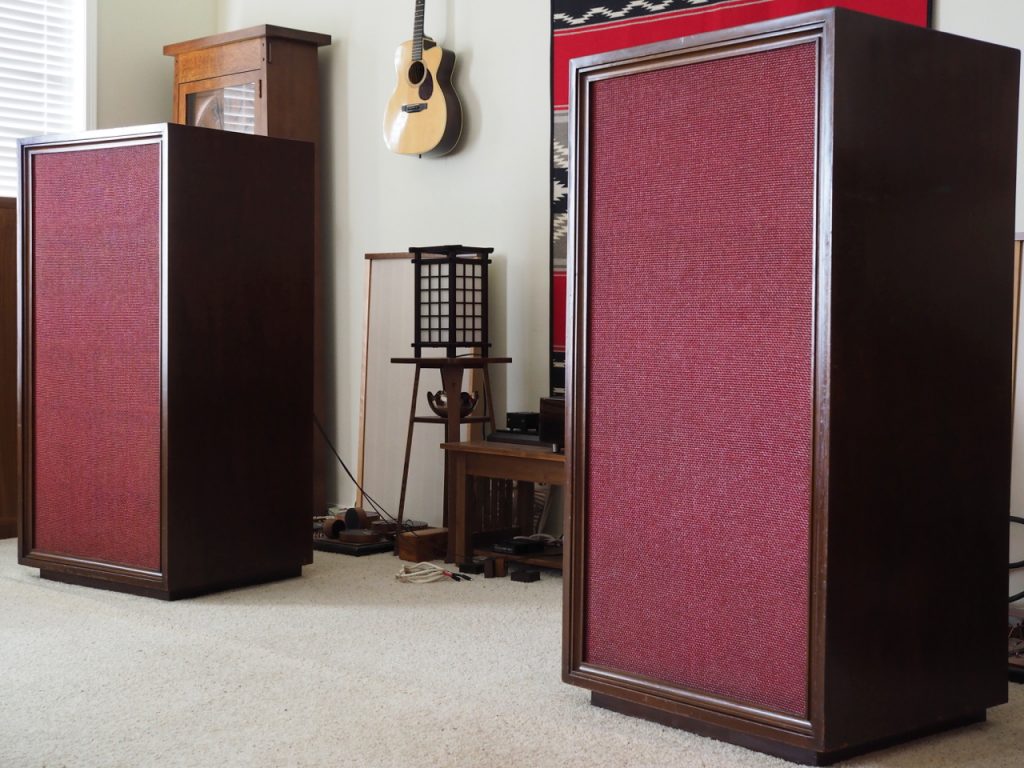
The "Stokowski" custom Altec loudspeakers.
The live-like musicality, sonics, and intense emotional impact the Duelund CAST tinned-copper crossovers combined with the "Stokowski" Altec's are capable of delivering is just staggering.
At the moment I'm not even trying to be objective, I'm just enjoying what I'm hearing from them, soaking it in, and hoping that my ability to articulate their performance catches up with my enthusiasm for what I'm hearing from them.
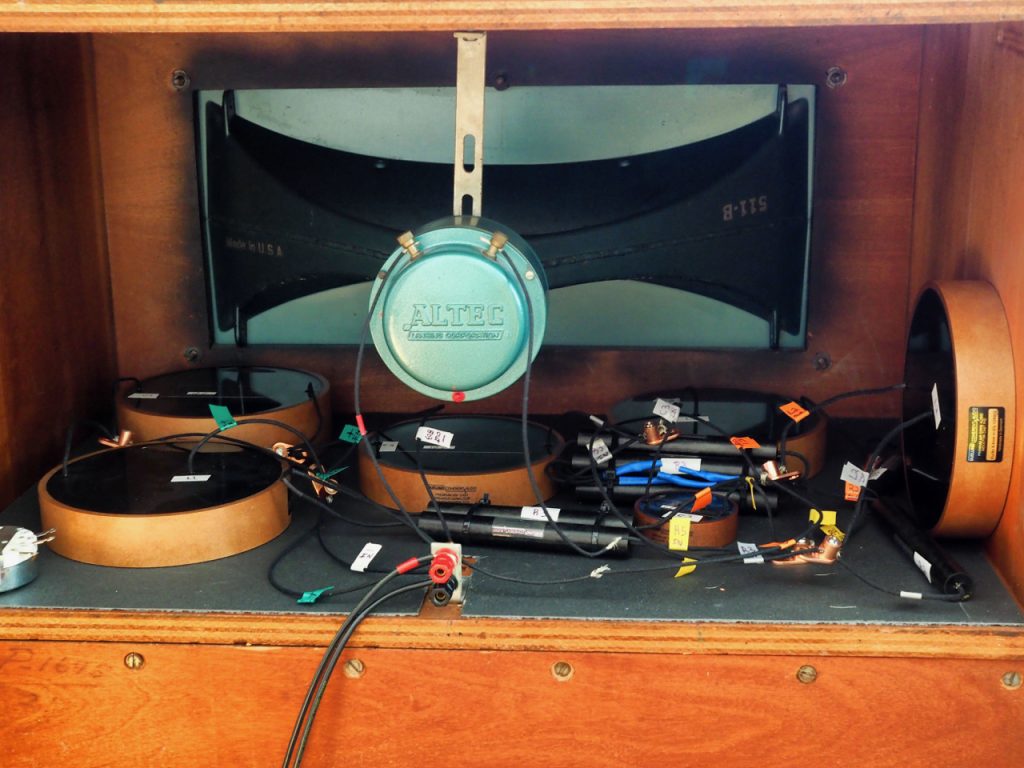
Duelund CAST tinned-copper crossover breadboards.
I've been using the 600V Duelund DCA12GA tinned-copper wire as speaker cables on the "Stokowski" Altec's since my buddy Chad and I moved them into my living room, into the Westminster's normal positions.
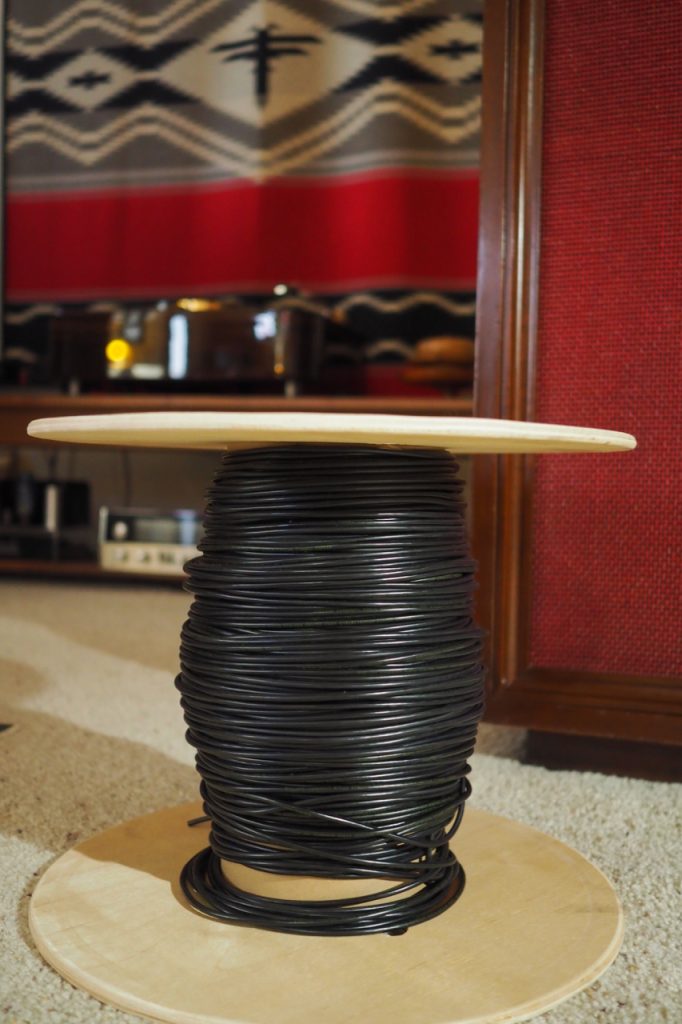
The new 600V Duelund DCA12GA tinned-copper tone wire!
The 600V Duelund DCA12GA tinned-copper tone wire wasn't really intended to be used as speaker cables, but rather for power cables like the DIY 600V DCA12GA power cable I built with it.
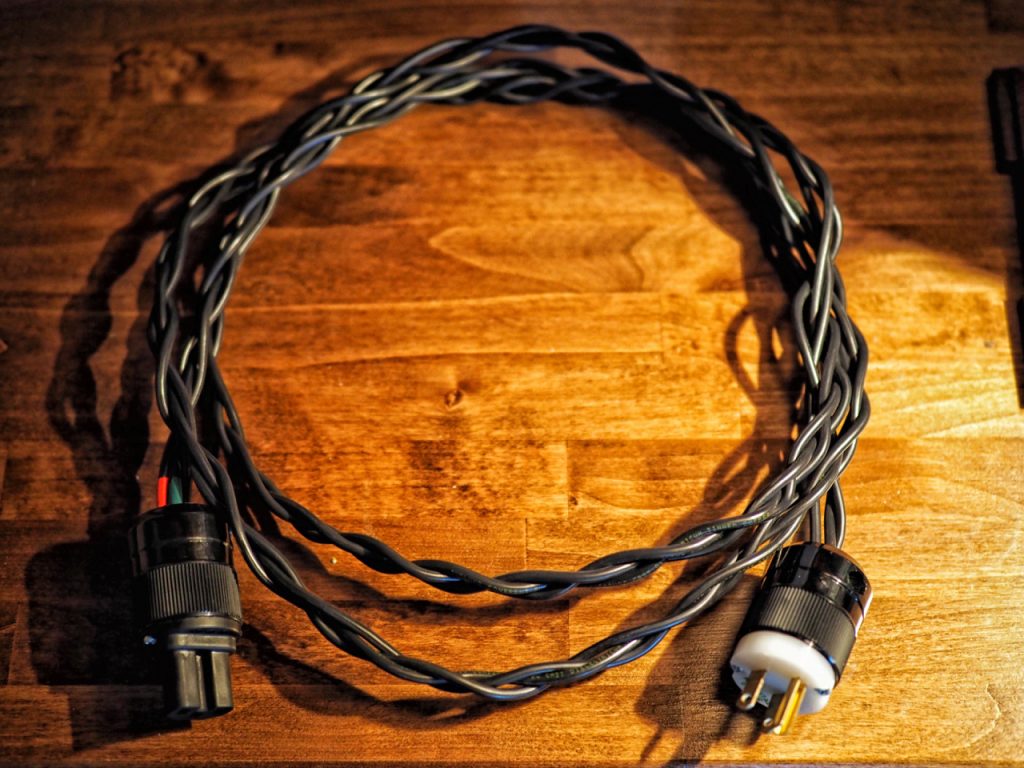
600V Duelund DCA12GA power cable
The only reason I tried the 600V Duelund DCA12GA tinned-copper wire for speaker cables was because the Duelund DCA12GA tinned-copper speaker cables I use for my Westminster's were too short for the "Stokowski" Altec's, so I thought I'd give the 600V Duelund DCA12GA to try and hear what it sounded like as speaker cables before I started on a DIY 600V DCA12GA power cable project with it.
After some weeks of in-situ run-in time as speaker cables, to get the 600V DCA12GA over that initial "settling-in" period of roughness I always hear with tinned-copper cables, it turned out that they sounded quite nice as speaker cables. More about that in a moment.
As a refresher, here's an overview of the construction and pricing of the Duelund tinned-copper cables I'm writing about today:
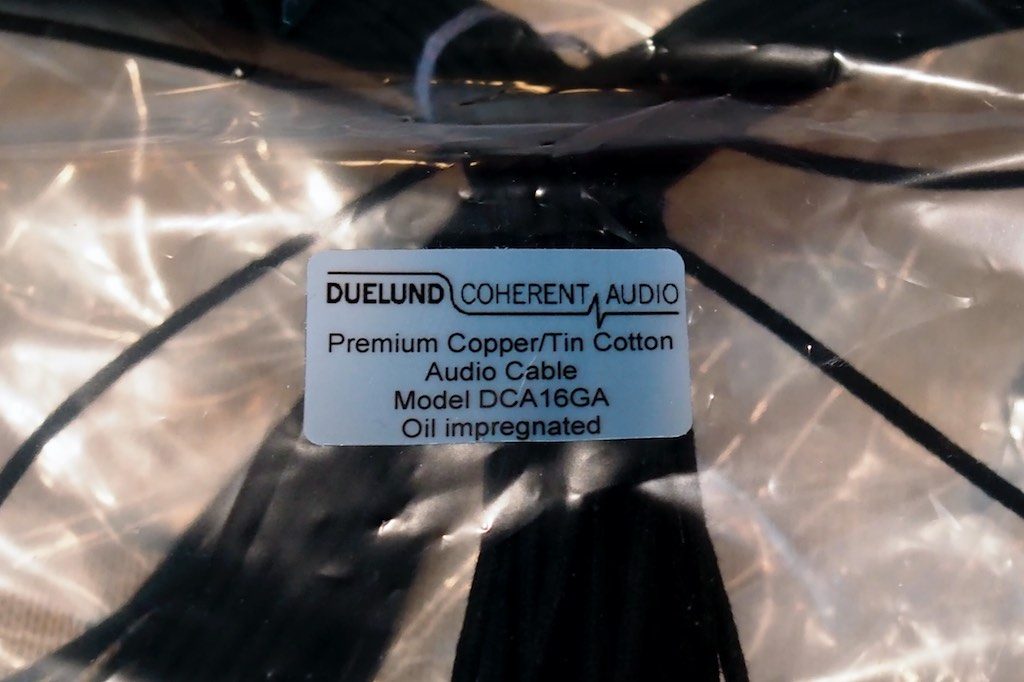
DCA16GA: The vintage inspired Duelund DCA16GA tinned-copper cable wraps 26 strands of 0.25mm diameter tinned-copper wires in an oil-soaked and baked cotton dielectric. Price is $9.99 USD per meter at Parts ConneXion.
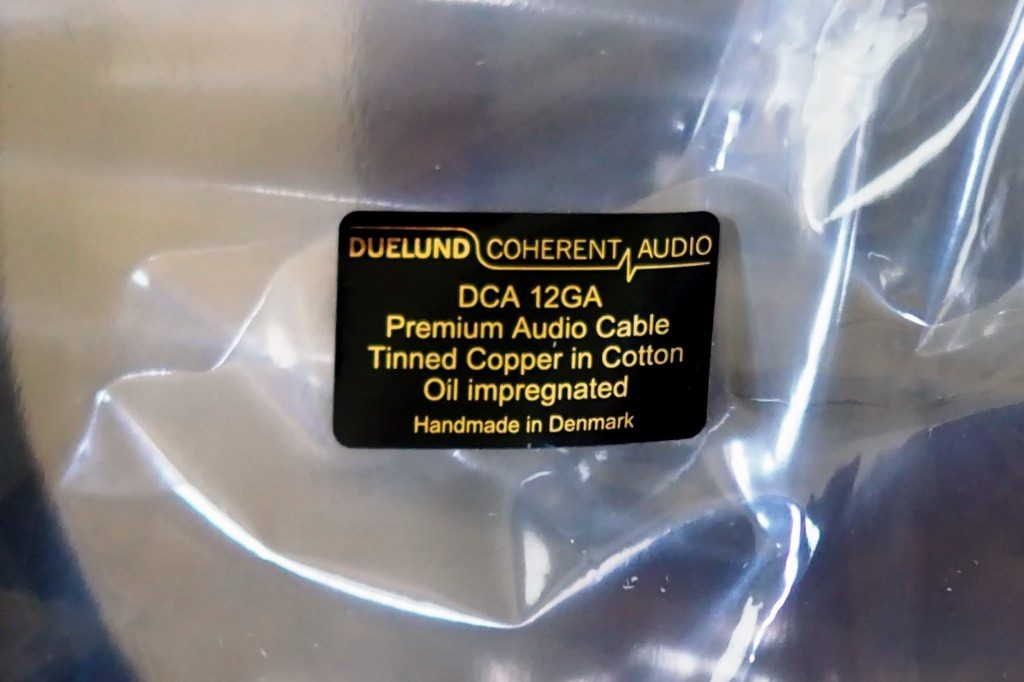
DCA12GA: The vintage inspired Duelund DCA12GA tinned-copper cable wraps 65 strands of 0.25mm diameter tinned-copper wires in the same oil-soaked and baked cotton dielectric used in the DCA16GA. Price is $19.95 USD per meter at Parts ConneXion.
600V DCA12GA: The 600V Duelund DCA12GA tinned-copper cable came about due to a lot of Duelund customers asking for a version of the DCA12GA that was safe to use for high-voltage applications like power cables.
The new 600V Duelund DCA12GA tinned-copper wire forgoes the oil-soaked and baked cotton dielectric for the new PolyCAST dielectric that was developed to achieve the 600V rating.
Per the Parts Connexion description, PolyCAST is “… a unique thermoplastic resin composite, which emulates Duelund’s “Signature” CAST process”, which means it is similar to the deluxe CAST damping material that is used in the Duelund CAST capacitors, inductors, and resistors.
So the 65 strands of 0.25mm diameter tinned-copper wires in the 600V DCA12GA tinned-copper cable are encased in the new PolyCAST dielectric. The price of the 600V DCA12GA tinned-copper cable is $9.95 USD per meter at Parts ConneXion.
The question that has been on my mind - and that I've got from a lot of you - is how does the 600V DCA12GA tinned-copper wire compare to the most popular Duelund DCA tinned-copper cables used for speaker cables, the Duelund DCA12GA and DCA16GA tinned-copper cables?
Duelund DCA16GA Tinned-Copper Cable Listening Impressions
It turns out I had enough Duelund DCA16GA on hand to make a set of 3-meter speaker cables, so I cut four 3-meter lengths and stripped about a half inch of the oil-soaked and baked cotton dielectric off the ends.
I get a lot of questions about what my favorite spades or banana connectors are for speaker cables, and my answer is always the same - neither.
I recommend you just use the bare wire ends, it sounds better that way. I know that's a rather "hair shirt" approach for some of you because it's not as tidy looking, but when you do it that way you are eliminating solder joints and connectors from the signal chain, and it sounds better (not to mention it's a lot cheaper).
So before you go out and buy fancy spade or banana connectors, try using nude wire connections first, listen to it for a couple of weeks, and then decide.
One thing I've found with any of my tinned-copper cables, whether it's interconnects, speaker cables, or now power cables, trying to do a quick A-B comparison with them just doesn't work well.
Even with previously run-in or conditioned tinned-copper cables, there's a "settling-in" period of a day or two before the musicality and sonics gels the way its supposed to.
After removing the well run-in 600V Duelund DCA12GA from the binding posts of the SPEC RSA-M3 EX Real Sound Amplifier and the "Stokowski" Altec's, I put the DCA16GA in place and played a little music, and as is typical for tinned-copper cables, it sounded kind of brash and forward initially.
In comparison, the well run-in Duelund 600V DCA12GA as speaker cables sounded smoother and richer, but less transparent. Given the good experience I had with conditioning my DIY 600V Duelund DCA12GA power cable on my Cable Cooker (6 days worth), I put my Duelund 600V DCA12GA speaker cables on the Cable Cooker for 3 days of conditioning while I letting the DCA16GA tinned-copper cables settle into their new role as speaker cables. I'll check them at 3 days, and then go for another 3 days if they need it.
Incidentally, I haven't had good results with conditioning the Duelund DCA tinned-copper cables with their oil-soaked and baked cotton dielectric on my Cable Cooker. I think the line of DCA cables with the oil-soaked and baked cotton dielectric sound better if they run-in naturally in-situ.
So that's the approach I took with the DCA16GA tinned-copper cables as speaker cables, and I just let them run-in naturally in-situ.
After the DCA16GA tinned-copper cables speaker cables got some run-in time on them, the initial brashness and forwardness I heard was gone, and they were gelling nicely with the system.

Seattle's Jazz24 stream
Listening to the Jazz24 stream out of Seattle, alternating with vinyl, the DCA16GA as speaker cables presentation was vibrant, transparent, resolving, and gave a huge sense of being immersed in the acoustic space of the recording.
Imaging was impressively life-like in physical presence, while (fortunately) avoiding the overdone and etched style of imaging you sometimes get with audiophile-style cables.
The soundstage was wide, deep, natural in height, and combined with the huge sense of acoustic space the DCA16GA cables provide, made for quite an impressive presentation of musicians in my listening room.
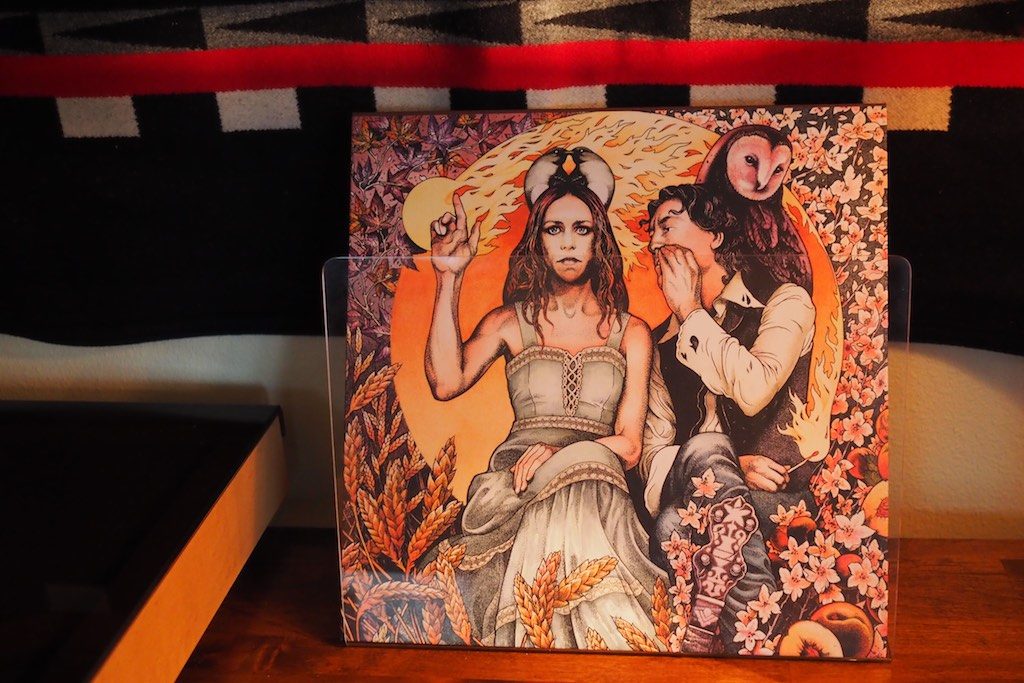
The Harrow & The Harvest
The DCA16GA speaker cables are very resolving, and I was hearing all kinds of satisfying musical nuance in strings, cymbals, drum heads, vocals, piano, and brass.
From a musicality perspective, timbral textures were superb, and motional elements like rhythm, melody, beat, and tempo were all believably realistic, engaging, and satisfying.
Overall, I give the DCA16GA speaker cables high marks, and they delivered a vivid sense of presence, great tone, and engaging dynamics that made for very satisfying music listening.
I could easily live with the DCA16GA as speaker cables for the long term, and they do a convincing job of giving recorded music an exciting and satisfying live-like feel that I find really appealing.
I also could easily live with the 600V DCA12GA as speaker cables. They were a bit creamier and richer sounder than the DCA16GA, but very musical and enjoyable.
Longer term listening helped me realize that while the 600V DCA12GA and DCA16GA definitely sounded different, they both possess a Venn overlap with what my system needs voicing-wise, what my personal tastes are for musicality and sonics, and that makes either of them a good choice.
Next I'll try the 600V DCA12GA with 3 days of conditioning on my Cable Cooker and let you know how that works out. Then I may give the 600V DCA12GA another 3 days of conditioning for a total of 6 days.
After I get done with the 600V DCA12GA tinned-copper cable I'll try the DCA12GA with the baked & oil-soaked cotton dielectric, and compare it to both the 600V DCA12GA and DCA16GA.
Duelund 600V DCA12GA Tinned-Copper Cable Listening Impressions
I got distracted over the last week and accidentally left the Duelund 600V DCA12GA tinned-copper speakers cables on my Cable Cooker for 6 days of conditioning before I realized it.
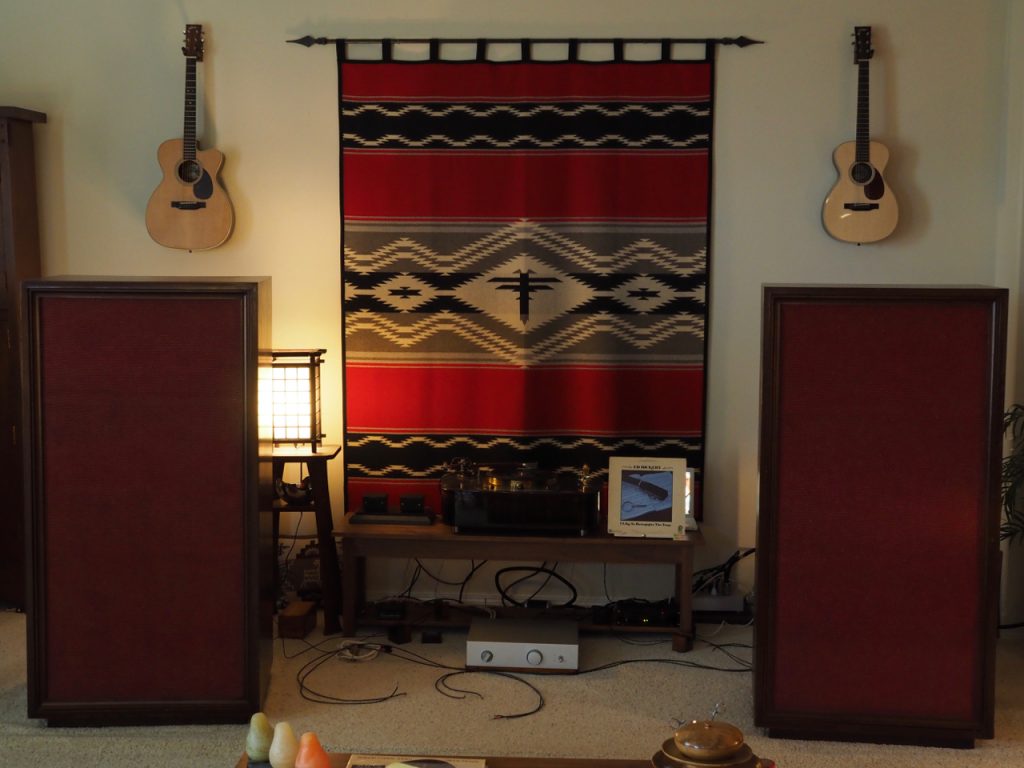
DCA16GA speaker cables waiting to be swapped out for the 600V DCA12GA speaker cables.
This morning I swapped out the DCA16GA speaker cables for the cooked 600V DCA12GA speaker cables.
It appears to be a happy accident that I conditioned the 600V DCA12GA tinned-copper speaker cables for 6 days instead of 3 days, and they sound ravishingly good on the Altec's without even any settling in time.
At the moment, while I'm writing this update, I'm listening to the superb Jazz24 stream out of Seattle, and I noticed a couple things right away in how the "cooked" 600V DCA12GA tinned-copper speaker cables differ from the DCA16GA speaker cables that were run-in in-situ on the Altec's.
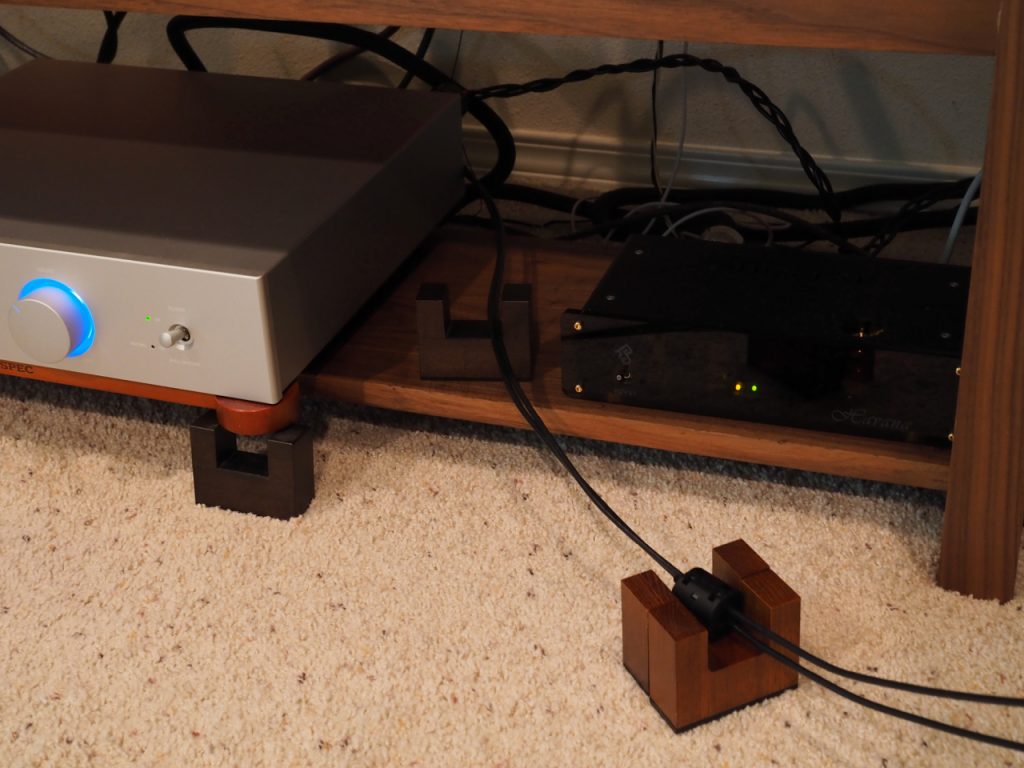
600V DCA12GA tinned-copper speaker cables connecting the SPEC amp to the Altec's.
First of all, the 600V DCA12GA tinned-copper speaker cables responded to 6 days of conditioning on the Cable Cooker in the same sort of way it did as a power cable, which I reported on HERE.
Here's a quick recap of the changes I heard with Duelund 600V DCA12GA tinned-copper power cable with conditioning on the Cable Cooker:
Initially the 600V Duelund DCA12GA power cable sounded somewhat shut-in and thin compared to my reference Acoustic Revive Absolute Power Cable, which sounded rich, natural, vivid, and very expressive.
With 3 days of conditioning on the Cable Cooker DIY 600V Duelund DCA12GA power cable opened up significantly, and the thinness I was hearing was disappearing.
After 6 days of conditioning on the Cable Cooker 600V Duelund DCA12GA power cable opened up even more, and gained a bit of charming "sparkle" in the high-frequencies.
The overall tonal balance improved as well, with the DIY 600V Duelund DCA12GA power cable sounded a bit richer, and even more natural from a timbral perspective.
So that's a quick recap of changes wrought by conditioning the DIY 600V DCA12GA on the Cable Cooker, and if anything, the changes wrought by conditioning were even more dramatic with the 600V DCA12GA tinned-copper speaker cables.
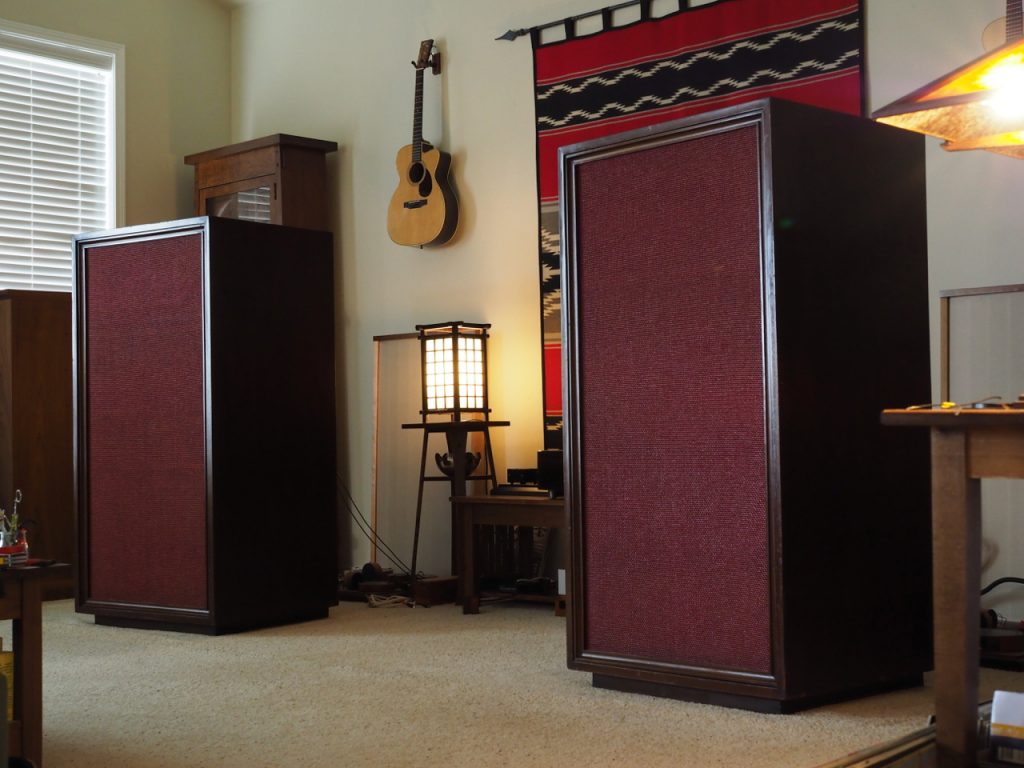
600V DCA12GA tinned-copper speaker cables on the Altec's.
Now let me tell you what I heard from the conditioned Duelund 600V DCA12GA tinned-copper speaker cables vs. the DCA16GA tinned-copper speaker cables on the "Stokowski" Altec's with their amazing Duelund CAST tinned-copper crossovers from the Duelund-Altec Project.
The bass response of the 600V DCA12GA tinned-copper speaker cables is greater in magnitude compared to the DCA16GA tinned-copper speaker cables on the Altec's, so that's something to think about if you are trying to decide which would be the best match for your system.
If your bass response is a little on the lite side go with the 600V DCA12GA tinned-copper speaker cables to flesh it out nicely, but if your bass response is exaggerated or boomy, go with the DCA16GA, as it'll help even the lumps out.
Both the 600V DCA12GA and DCA16GA tinned-copper speaker cables are gorgeous and vivid in the mid-range in that way that is unique to tinned-copper cables, with the 600V DCA12GA sounding a little more relaxed and liquid, and the DCA16GA sounding a little more transparent and with sharper image outlines.
So the net result is that the 600V DCA12GA provides a richer, warmer, and fuller presentation than the DCA16GA, while the DCA16GA is more neutral in overall character, with a little more high-frequency sparkle, with more emphasis on nuance, and it is more vivid overall.
I suppose another way to say that is that the 600V DCA12GA tinned-copper speaker cables lean a little more to the "musicality" side of the hifi voicing spectrum, while the DCA16GA cables lean a little more to the "sonic" side of the hifi voicing spectrum, although both provide a very compelling blend of musicality and sonics that can only be described as superb.
Given the extreme affordability of the DCA16GA and 600V DCA12GA cable, I suggest that you give both a try in your system. I predict it'll be very entertaining and illuminating for you, and you can pick the cable that suits your tastes the best.
I have to say I'm rather stunned at the final result of 6 days of conditioning the 600V DCA12GA tinned-copper speaker cables on the Cable Cooker, and they sound ravishingly gorgeous on the Altec's.
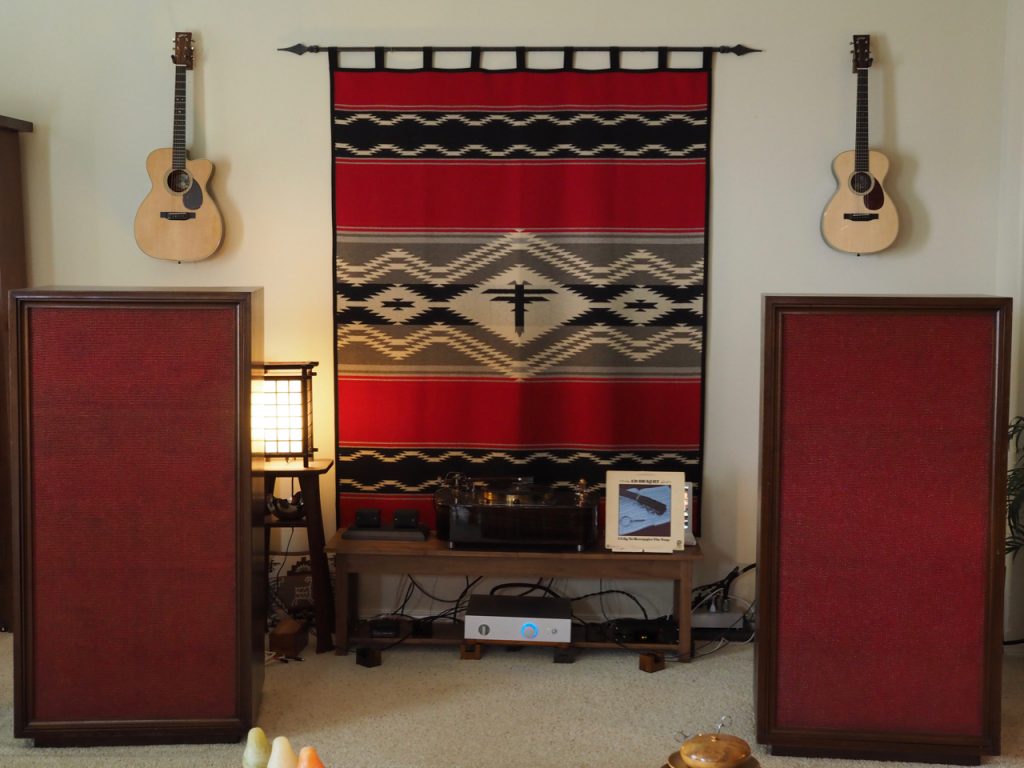
600V DCA12GA tinned-copper speaker cables on the Altec's.
The conditioned 600V DCA12GA tinned-copper speaker cables sound utterly natural and mesmerizing on the Duelund-ized Altec's, turning my morning listening session into the musical equivalent of a late night set in a jazz club, except maybe better!
I absolutely love what I'm hearing from the cooked 600V DCA12GA tinned-copper speaker cables on the Altec's, making them a stone-cold bargain at $9.95 USD per meter.
What I'm hearing from the cooked 600V DCA12GA tinned-copper speaker cables is world class in terms of musicality, sonics, and emotional involvement with the music, which means that with a little conditioning, you can build a world class set of 3-meter speaker cables for a little less than $120 USD.
You can't even buy three 45RPM LPs from Acoustic Sounds for that small amount of cash, so those of you on a budget take note. Heck, even if you're not on a budget take note, as these cooked 600V Duelund DCA12GA tinned-copper speaker cables are freaky good on my Altec's!

600V DCA12GA tinned-copper speaker cables.
Ok, let me drill down a little about what I'm hearing sonically and musically.
Starting with first impressions, what I noticed first about the cooked 600V DCA12GA tinned-copper speaker cables was the enormous and natural sounding sense of recorded "space" they fill my listening room with.
It's like hearing a perfectly dialed-in recording acoustic in a live setting where the recording engineer has dialed in the reverberation time perfectly. It sounds utterly natural, immersive, spacious, and tonally gorgeous.
Also, the imaging is spooky-vivid and yet superbly natural and relaxed sounding, giving a very live-like presentation that is really satisfying.
Tonality is off the charts good, with rich and deep tone color, and with superb timbral textures that have a live-like vibrancy about them.
Vocals emerge ghost-like from a black background in vivid images with loads of living presence - goosebumps territory for sure.
I know, I am waxing very enthusiastically, but what I'm hearing sounds so bloody good it's hard to put on my analytical hat, as I'm getting into what I'm hearing from the music so much.
There's also lots of very natural sounding nuance, with beautiful decay of overtones, that makes for very enchanting listening sessions
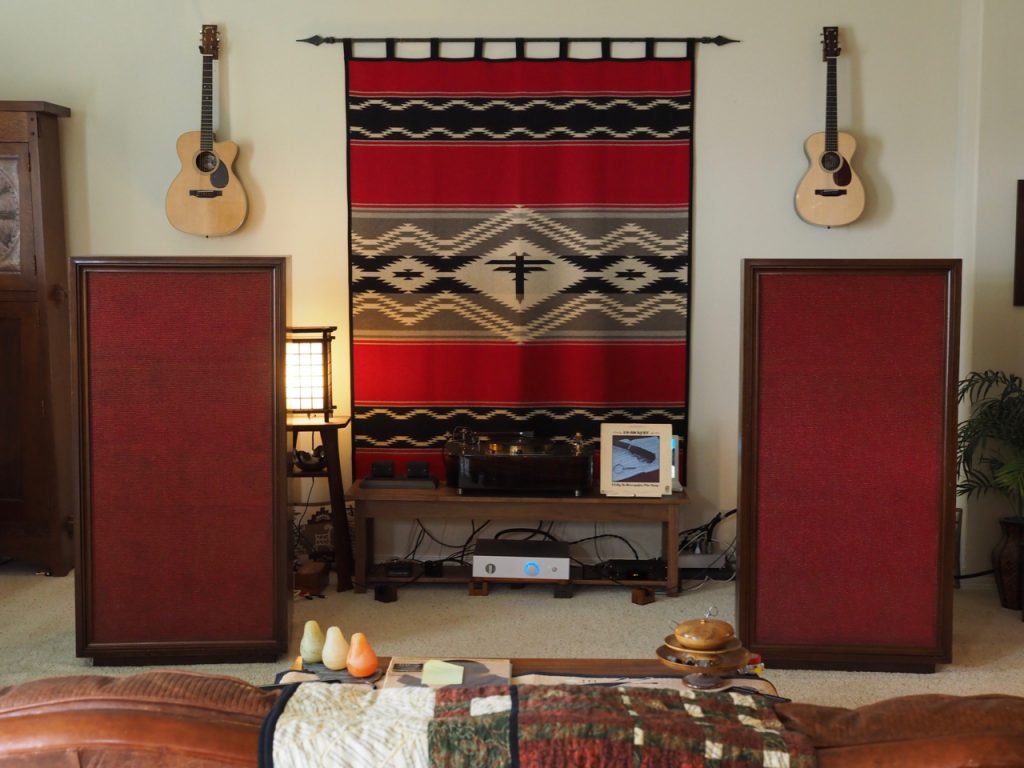
System view from the listening couch.
Timbral textures are superb, with cymbals have a very natural sounding shimmer and nuanced presentation. Drum kits sound both powerful and nuanced, and I'm hearing a natural sense of of air on the drum heads. Vocals are sibilance free, and sound utterly natural. Horns also sound perfectly natural, never sounding unnaturally shrill, like you sometimes hear in hifi.
Pianos shimmer and sparkle with colorful tone, upright bass provides a driving beat, with lots of pitch definition and timbral texture.
Percussion sounds invitingly real, with bells, vibes, and the like having a superbly natural presentation.
I think I could go on and praise every element musically and sonically that I'm hearing from each song in the Jazz24 stream, as it's so captivatingly musical, however, let me just say that this is the best combination of musicality & sonics I've ever heard in my listening room by a large margin, or any listening room, or show system, for that matter.
I know the above statement might be a little surprising given I'm talking about listening to a Jazz24 stream from a modest digital front end, but this combination of equipment, with the Duelund CAST tinned-copper crossovers on the "Stokowski" Altec's, the SPEC amplifier, the Soundsmith phono stage, the Duelund DCA20GA interconnects, the DIY Duelund 600V DCA12GA power cable, are just stunning, and it's amazing to hear how good even modest digital can sound on this system.
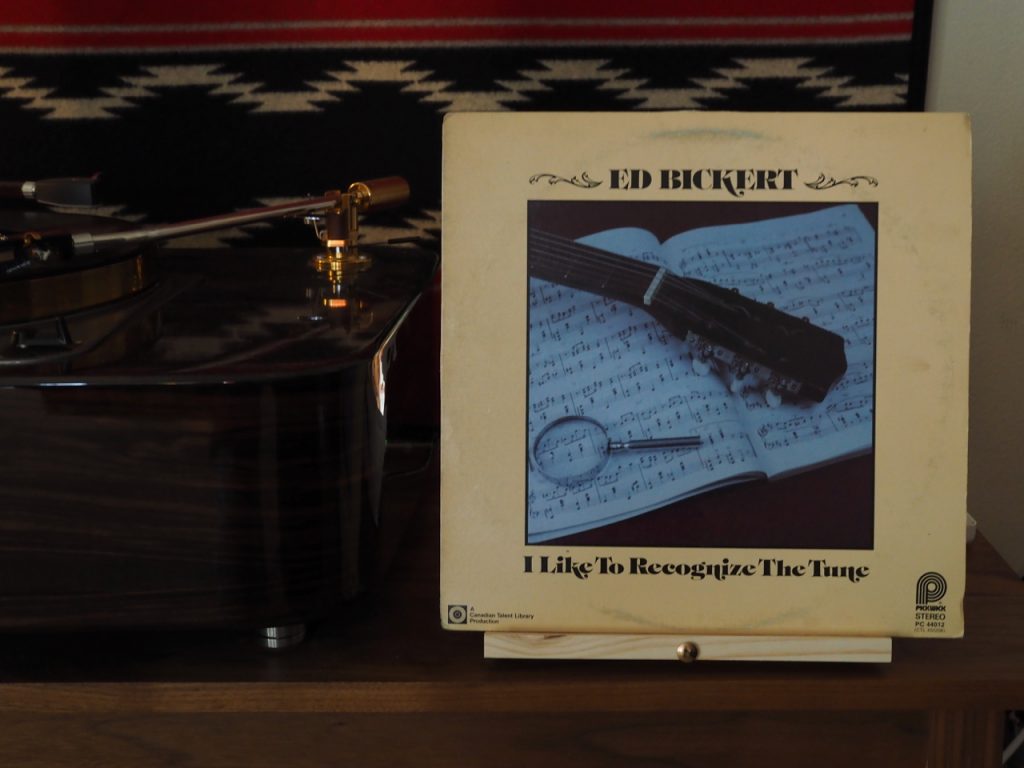
Ed Bickert's "I Like To Recognize The Tune" LP.
Switching over to vinyl, the musical and sonic performance is as superb as you would guess based on what I just said about the system's performance on digital.
My friend and guitar instructor, David Gitlin, a superb jazz guitarist, recently introduced me to the jazz guitar playing of the Canadian jazz guitarist, Ed Bickert.
Ed Bickert is a jazz guitarist that other jazz guitarists are wowed by, and I'm buying every record I can get my hands of his. Rather amazingly, Ed Bickert plays a Fender Telecaster, and he gets some of the most beautiful jazz guitar tone I've ever heard from it. Ed is truly a marvel, he can make his well-worn Tele sound like the most gorgeous Gibson L5 archtop jazz guitar you've ever heard.
Sadly Ed passed from this mortal sphere recently (RIP Ed!), so you better get every record of his you can now, as they'll be hard to come by in the future.

Paul Desmond's "Pure Desmond" with Ed Bicker on guitar.
Incidentally, Paul Desmond's albums often have Ed playing guitar on them, so check them out. Paul Desmond's Pure Desmond LP with Ed Bickert is truly superb, so if you see a copy be sure to grab it.
By the way, the modest little Soundsmith MMP3 MK II phono preamplifier is a superb match to the SPEC RSA-M3 EX Real Sound Amplifier, and together they make for a world-class amplification combination.

600V DCA12GA tinned-copper speaker cables.
In this system, I'm starting to realize what a truly superb amplifier the SPEC RSA-M3 EX Real Sound Amplifier. I knew the SPEC was really good before when I reviewed it for Positive Feedback, but it is revealed to be off the charts good when paired with the "Stokowski" Altec's and their Duelund-Altec Project Duelund CAST tinned-copper crossovers.
The SPEC has a lot in common musically & sonically with the best of the single-ended amplifiers I've heard, plus it's ultra-reliable, relatively powerful in comparison, and most importantly it's stunning with my Altec's, so I wanted to give the guys at SPEC a little plug for their impressive accomplishment.
Kudos to Yazaki-san and the team at SPEC for doing such and incredible job with the SPEC RSA-M3 EX Real Sound Amplifier, it's truly something special in its own right.

SPEC RSA-M3 EX Real Sound Amplifier
Ok, I got off track a little bit because I'm so excited about what I'm hearing from the system with these 600V DCA12GA tinned-copper speaker cables, so allow me to get back on topic.
I'm going to let the Duelund DCA 600V DCA12GA tinned-copper speaker cables settle into the system for a few days, as I believe they have even more to offer.
I'll report back on them along with how they compare to the regular DCA12GA tinned-copper speaker cables with their baked oil-soaked cotton dielectric.
Much more to come!
Ok, that's it for now.
I'll be updating this post with new information as I have more to say about it, so check back on this post for more information.
As always, thanks for stopping by, and may the tone be with you!



























